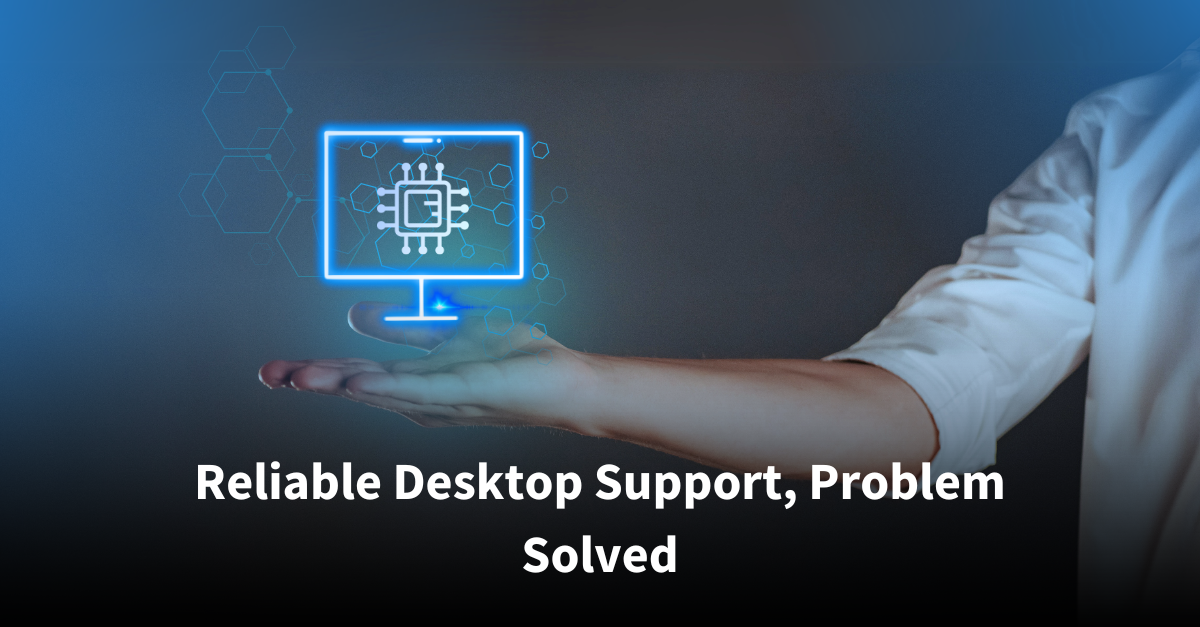Schedule a FREE call with our outsourcing expert now and get a precise quotation that meets your requirements. Don't wait - get started today!
For many small and medium enterprises (SMEs), dealing with IT problems is a daily struggle. A slow computer or a crashed system can throw a wrench into your entire day. These constant IT hiccups can disrupt your work and hurt your customer experiences. But there’s a solution that can keep your business running smoothly—desktop support services.
These services go beyond just fixing computers. They ensure your systems work seamlessly, helping you avoid unexpected interruptions. Let’s take a closer look at how desktop support services can help SMEs leave IT troubles behind for good.
Understanding the Core of Desktop Support Services
Desktop support services involve assistance with the day-to-day technical needs of a company’s employees. This includes troubleshooting hardware and software issues, providing updates, and ensuring that systems are running efficiently.
Beyond Troubleshooting: The Strategic Role of Desktop Support
- Proactive System Monitoring: Regular system checks to identify potential issues before they escalate.
- Customized IT Solutions: Tailoring support services to meet the specific needs of different business units.
- Integration with Business Goals: Aligning IT support with overall business objectives to enhance productivity.
- Data Security Management: Implementing protocols to safeguard sensitive company data.
The Hidden Benefits of Desktop Support for SMEs
While the immediate goal is to resolve IT issues, desktop support offers several less obvious advantages that contribute to long-term success.
1. Boosting Business Continuity
Unplanned downtime can have a significant impact on business operations. Desktop support services ensure that SMEs can continue operations with minimal interruptions.
2. Enhancing Workforce Mobility
With the rise of remote work, desktop support helps ensure that employees can work from anywhere without technical difficulties. This flexibility boosts overall productivity and employee satisfaction.
3. Supporting Digital Transformation
Desktop support plays a crucial role in helping SMEs adopt new technologies smoothly, ensuring that the transition is seamless and employees are well-supported throughout the process.
Crafting a Support Strategy That Aligns with Your Business
A one-size-fits-all approach doesn’t work for desktop support. SMEs need a strategy that fits their unique requirements.
1. Identifying Key Pain Points
Before implementing desktop support, it’s essential to understand the specific challenges your business faces. This helps in creating a targeted support strategy.
2. Developing a Responsive Support Model
An effective support model is one that can adapt to the changing needs of the business. This includes scaling support services as the company grows and diversifies.
3. Leveraging Analytics for Continuous Improvement
Using data from support interactions to identify trends and areas for improvement can help in refining the support strategy over time. This ensures that the services remain effective and relevant.
The Future of Desktop Support: Emerging Trends and Technologies
As technology evolves, desktop support services must adapt to stay relevant. Here are some trends shaping the future of desktop support.
-
AI-Driven Support Solutions
Artificial intelligence is increasingly being used to automate routine support tasks, allowing human support teams to focus on more complex issues.
-
Cloud-Based Support Platforms
With more businesses moving to the cloud, desktop support services are also shifting to cloud-based platforms, offering greater flexibility and scalability.
-
Enhanced User Experience Through Personalization
Support services are becoming more personalized, offering tailored solutions based on individual user preferences and needs. This enhances the overall user experience and satisfaction.
According to a report, 93% of companies experience some form of IT downtime. Having reliable desktop support can drastically reduce this percentage, ensuring that your business remains operational at all times.
Building a Strong Support Team
Having the right team in place is essential for delivering effective desktop support. A well-structured support team can make all the difference in resolving issues quickly and efficiently.
1. Recruiting Skilled Professionals
Finding the right talent is the first step. Look for individuals with strong technical skills and a customer-first attitude. This ensures that the support team can handle a wide range of technical challenges while maintaining high service levels.
2. Ongoing Training and Development
Technology is always changing. Regular training sessions help the support team stay up-to-date with the latest tools and techniques, ensuring they can provide the best possible support.
3. Implementing Clear Communication Channels
Effective communication is crucial in desktop support. Establishing clear channels for employees to report issues and for the support team to provide updates ensures everyone is on the same page.
4. Encouraging a Collaborative Environment
A collaborative approach within the support team and with other departments fosters a more efficient problem-solving process. Sharing knowledge and working together leads to quicker resolutions and continuous improvement.
5. Measuring Performance and Customer Satisfaction
Regularly evaluating the support team’s performance through metrics like response times and customer satisfaction scores helps identify areas for improvement and recognize success.
End IT Nightmares with Magellan Solutions!
Ready to transform your IT support? Magellan Solutions offers top-notch desktop support services tailored to SMEs. Our expert support team ensures quick response times, high service levels, and improved customer experiences.
Book your FREE 60-minute business consultation today, and let’s strategize how to elevate your operations—NO COMMITMENTS, just results-driven insights! Experience the difference with Magellan Solutions.
















